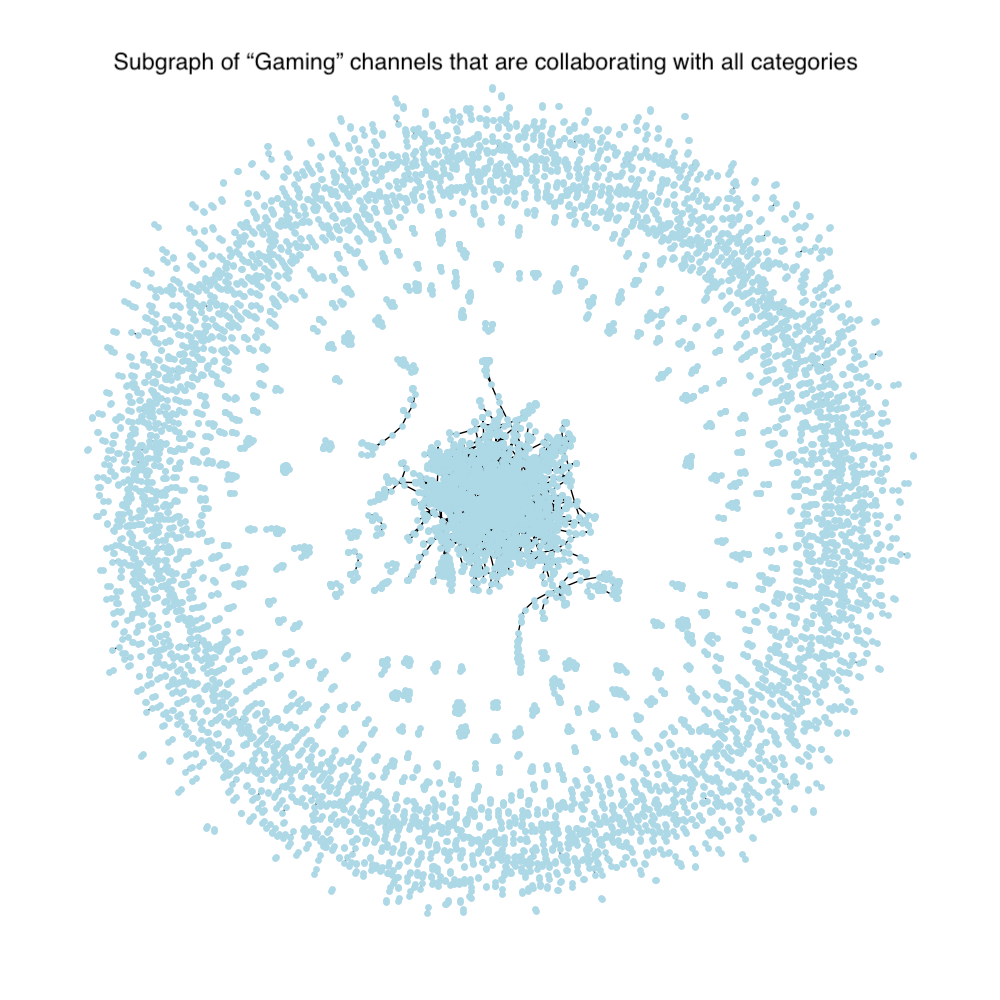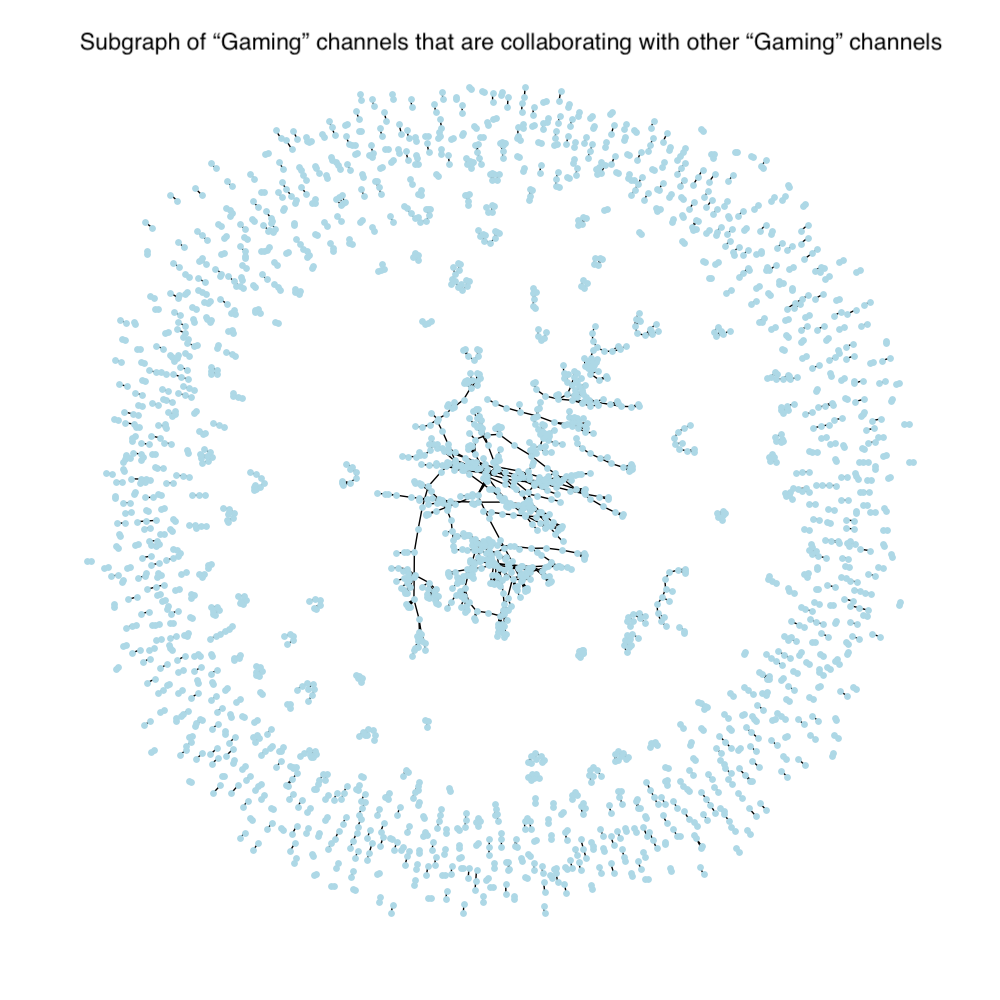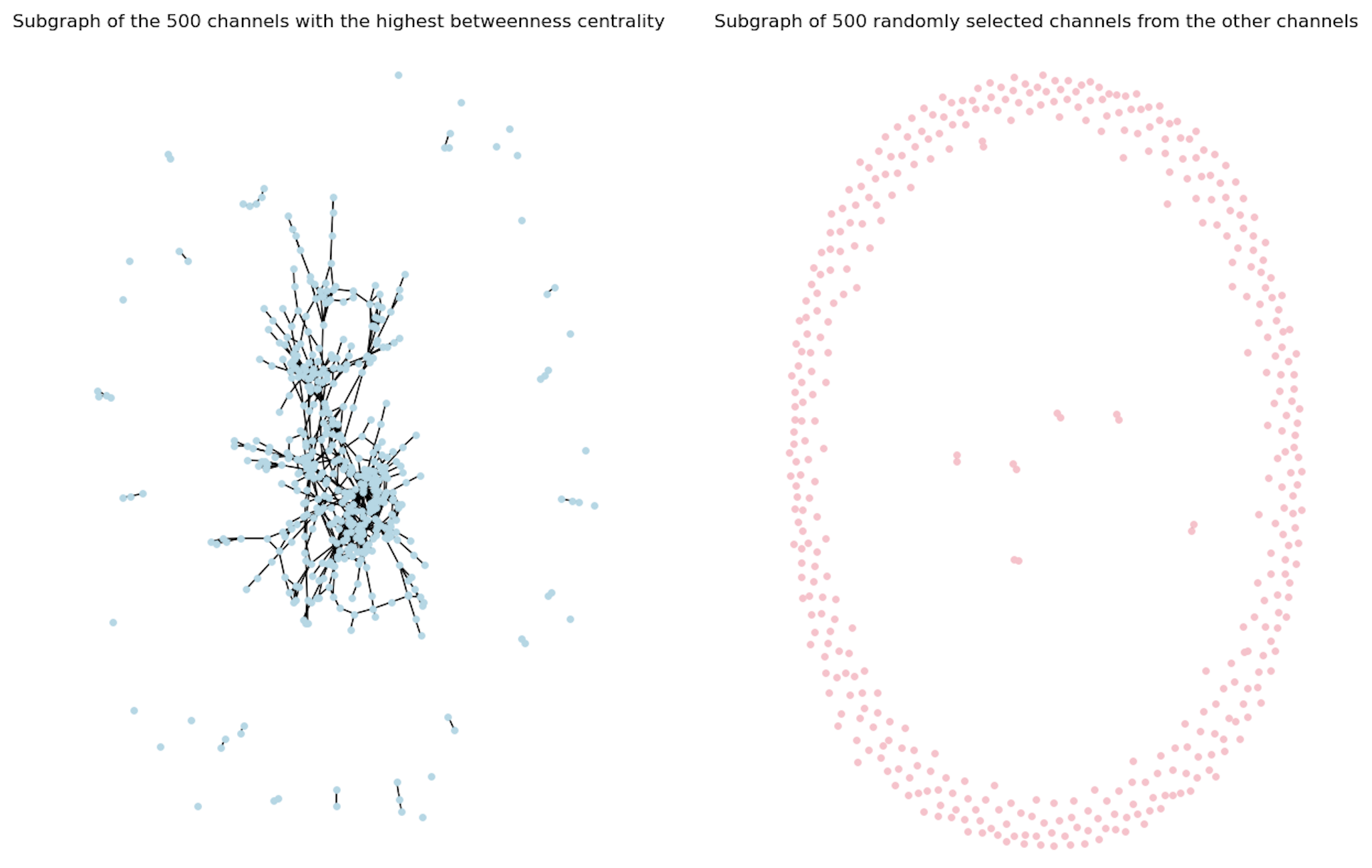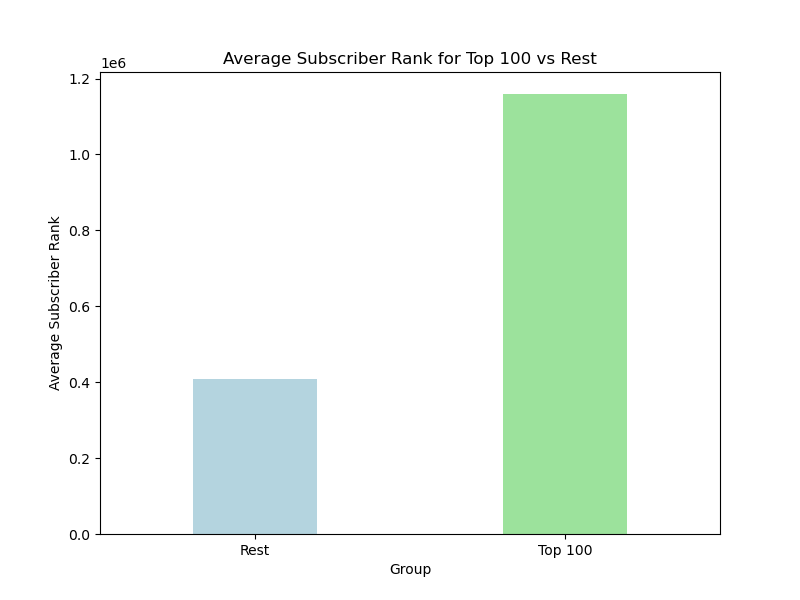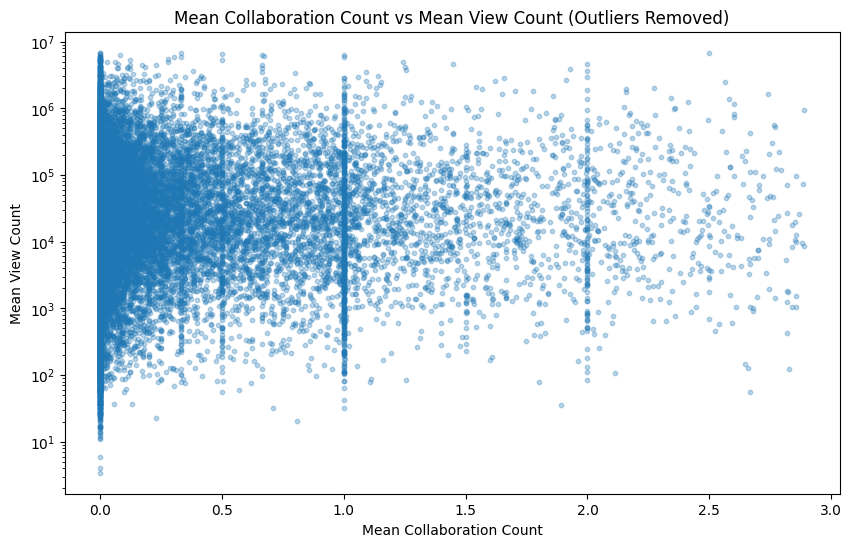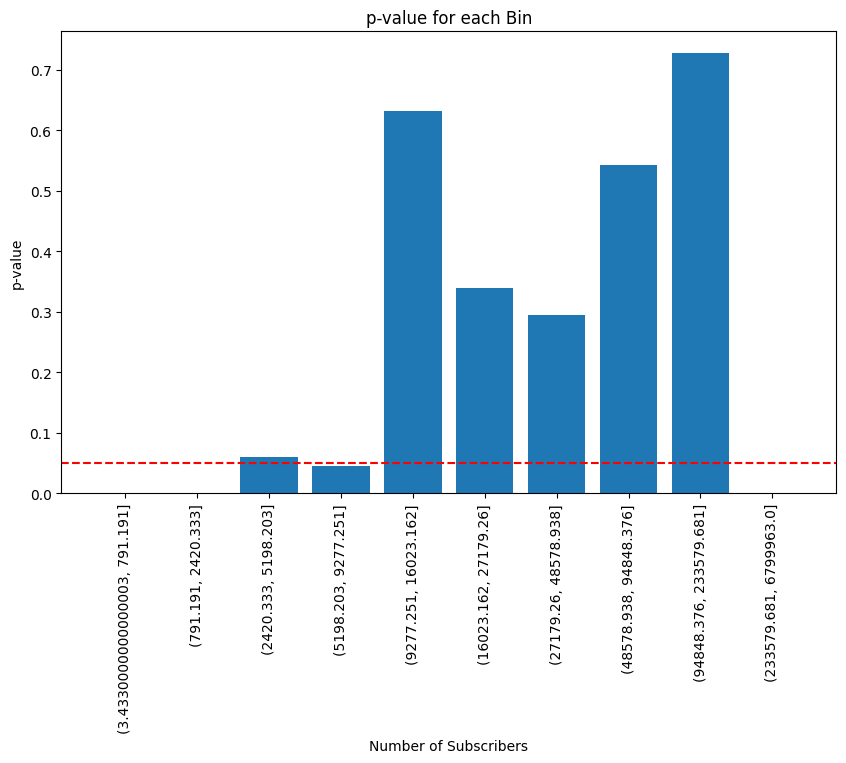Analyzing the Impact: Before and After Collaborating
To understand more in detail the impact of collaborations on a channel, we will look at indicators of channel success such as channel viewership and subscriber count. We can get an idea of viewership and subscriber growth trends from the sample of 9 channels plotted below. As we can see, there are occasional periods of growth in views/subscribers of a channel followed by periods of milder growth/plateau for a few channels. The number of views and subscribers are plotted on a log scale to accommodate for viral channels.
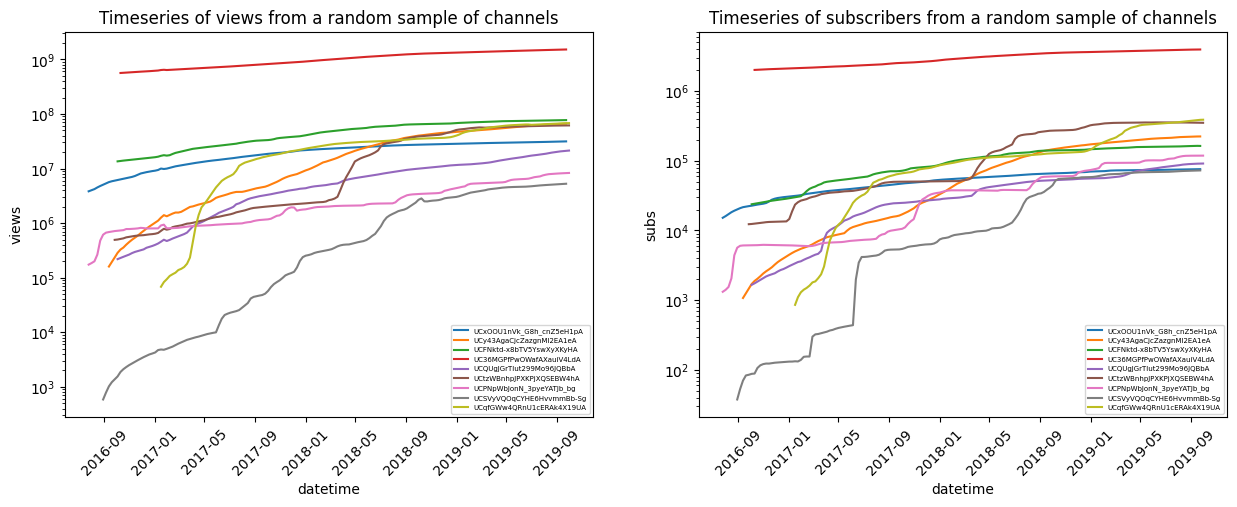
Next we have graphs of the timeseries of the gain in views/subscribers per week for the sample channels.
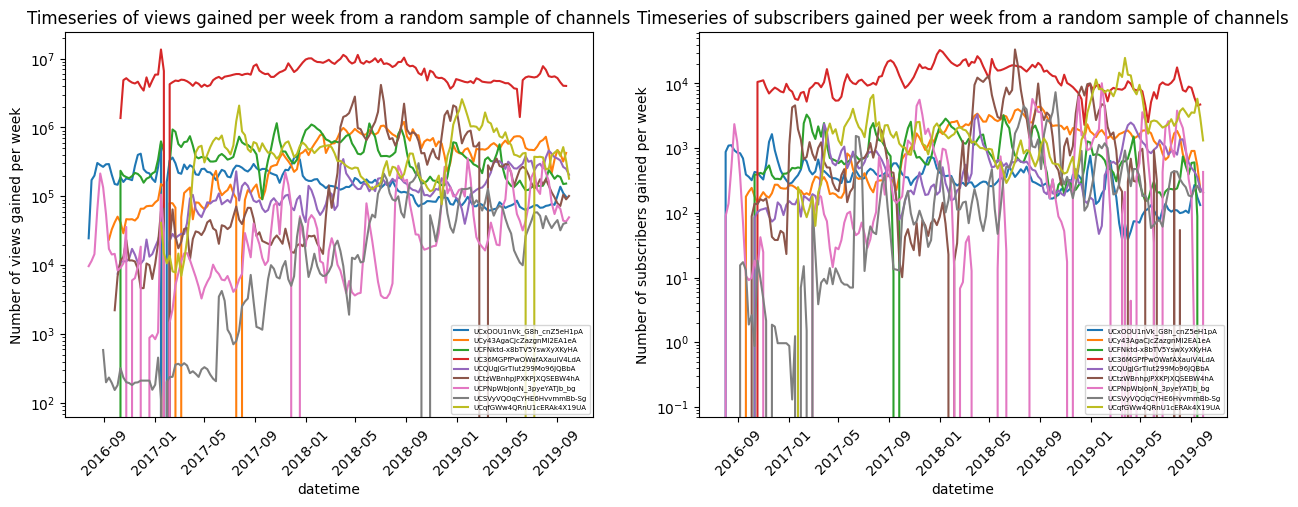
Given the many fluctuations in the number of views obtained by a channel in a week, we can zoom into how collaborations may influence the number of views a channel obtains in a week. Below is a timeseries graph of the number of weekly views obtained by the channel “BrandonDoesEverythin…” overlaid with the weeks when the channel has engaged in collaboration. As the channel collaborates on a rather regular frequency, this graph does not provide much information about how collaborations may have influenced weekly views.
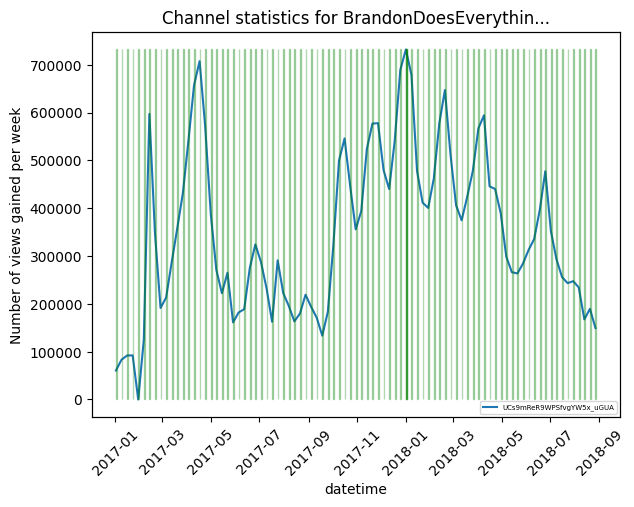
Thus, we plot the same kind of graph for a popular gaming channel: PewDiePie. There is a lack of channel weekly view data in our data set before 2017. However, we can see that PewDiePie collaborated rather frequently with other channels before the large spike in weekly views at the end of 2016. Afterwards, there was a long period of time between 2017 and 2018 during which PewDiePie did not collaborate with other channels. We can see that during this period, the weekly views on PewDiePie’s channel seems to be relatively steady. At the beginning of 2018, PewDiePie occasionally collaborates with other channels again. The number of weekly channel views obtained also seems to increase after the channel begins collaborating again.
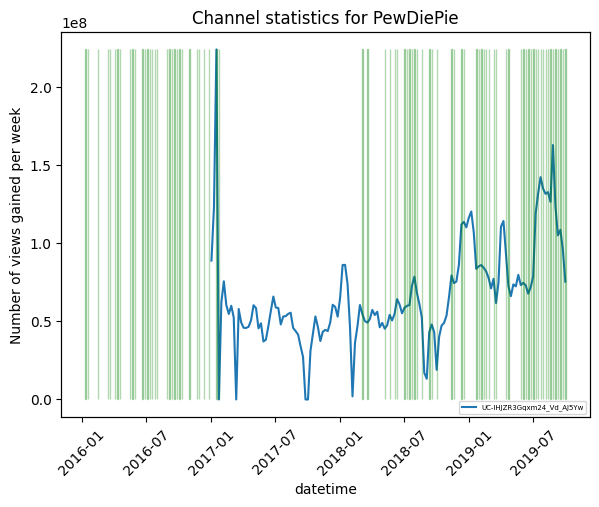
Next, we will examine the collaborations that 9 sample channels engage in. There does not seem to be very strong correlation between collaboration and weekly viewership of a channel from these graphs. Thus, the relationship between collaborations and weekly channel views warrants more investigation.
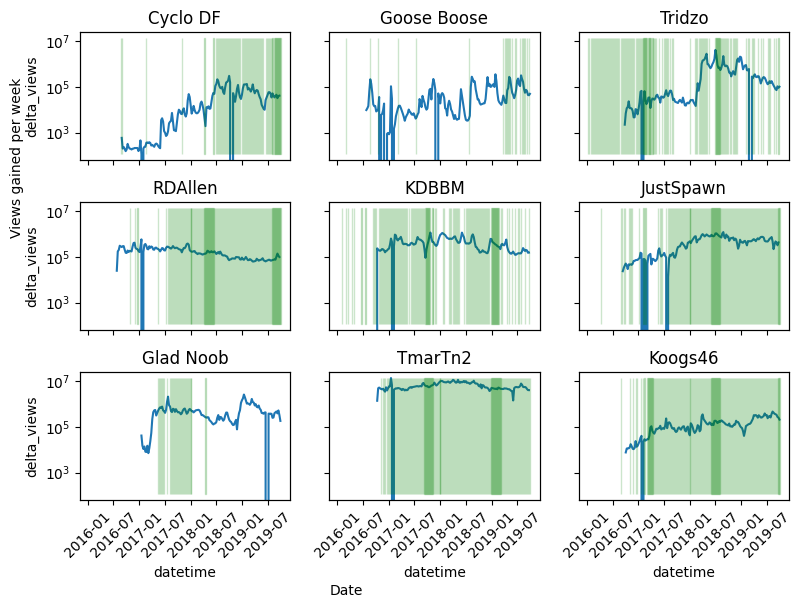
We proceed to plot the same type of graph for a random sample of the 10 most popular channels. These channels seem to engage in collaborations, although to a rather limited scale.
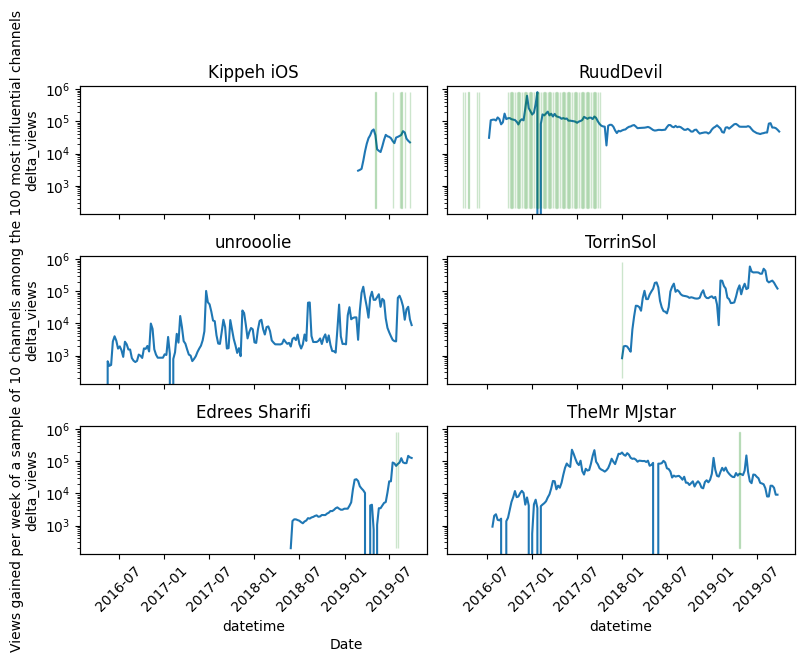
We will run some regression analysis to model the impact of the number of collaborations a channel engages in and the number of subscribers a channel obtains. From the regression model below, we can see that since the p-value of the number of collaborations variable is < 0, the number of collaborations that a channel engages in has statistically significant influence on the number of subscribers of a channel. However, the r-squared value of the model is only 0.008 which implies that a model is insufficient in explaining the variance of the number of channel subscribers. Thus, there is reason to believe that the number of subscribers to a channel is likely influenced by many other factors apart from the number of collaborations that the channel engages in. Based on the linear regression model, a unit increase in the number of collaborators that the channel engages in can increase the number of subscribers of a channel by 6.69 subscribers.
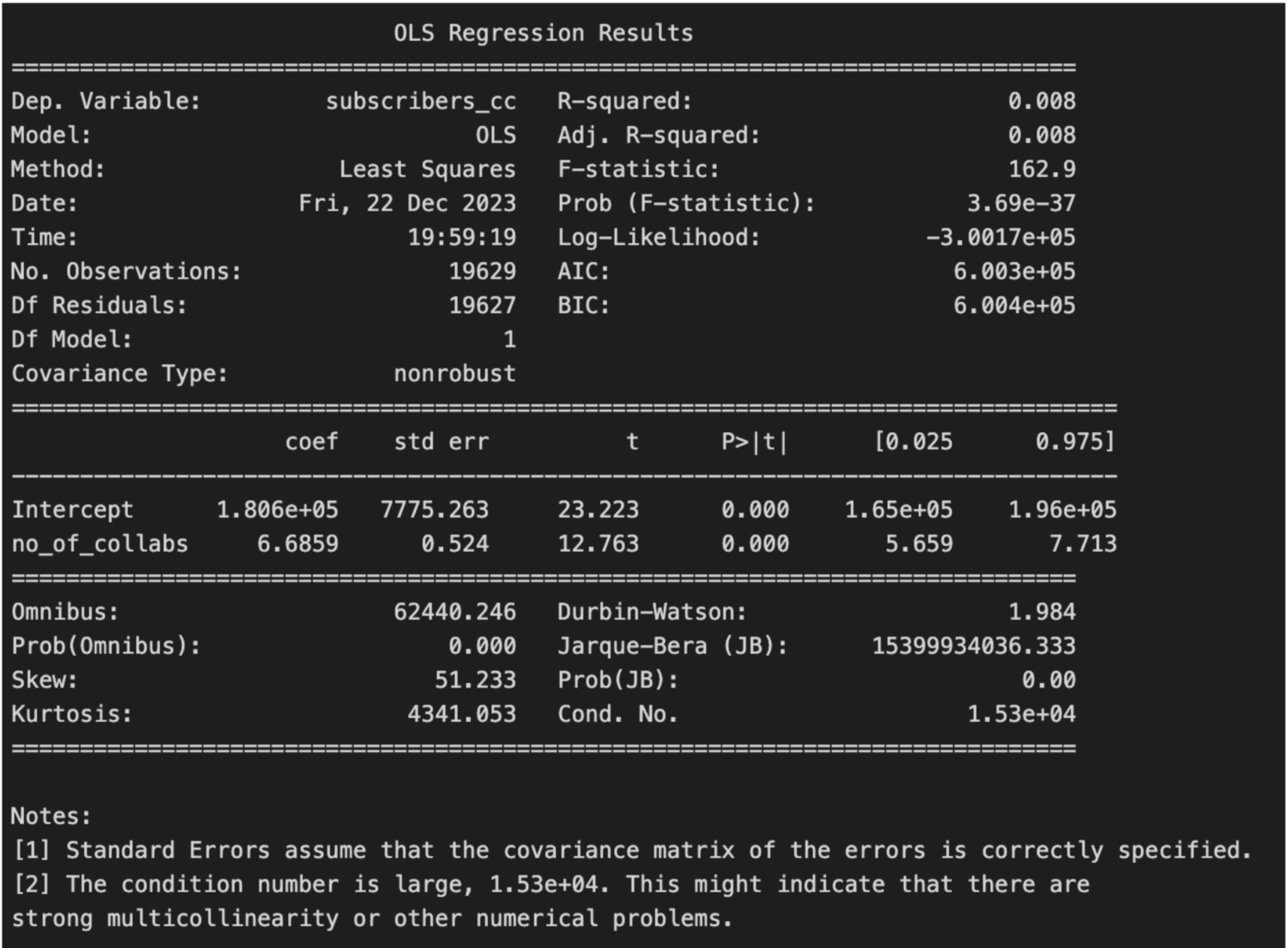
Next, we will examine the relationship between the lifespan of a youtube channel and the collaborations it engages in.
First, we will define a channel to be dead when the number of views it obtains in a month is less than 20% of its subscriber count. From there we can obtain the lifespan of a channel. One point to note for this is that due to the dataset only containing data up to July of 2019, there is a limit to the maximum lifespan a channel may have. Below is a graph of the distribution of the lifespan of youtube channels in the dataset. We can see that this distribution seems to be bimodal with the two largest proportion of channels having lifespan either close to 0 or around 35 to 40 months.
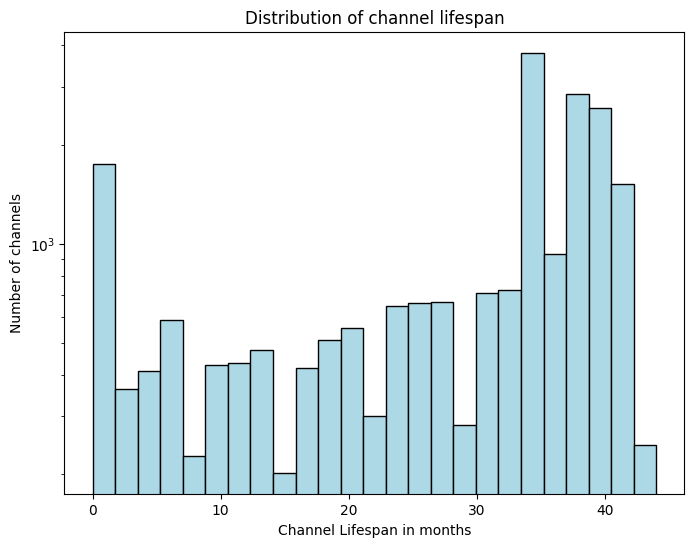
Next, we shall run some regression analysis to model the relationship between lifespan of channels and the number of collaborations it engages in.
From the linear regression results below, the number of collaborations that a channel engages in has a statistically significant influence, at the 5% significant level, on the lifespan of the channel as it has a p-value < 0.05. However, this model with number of collaborations as the only factor influencing channel lifespan does not explain the variance in channel lifespan very well since the r-squared value is only 0.06. Thus there is reason to believe that several other factors may influence the lifespan of the channel. From this model, we can conclude that a unit increase in the number of collaborations a channel engages in on average increases the lifespan of the channel by 6.88 * 10^-5 months.
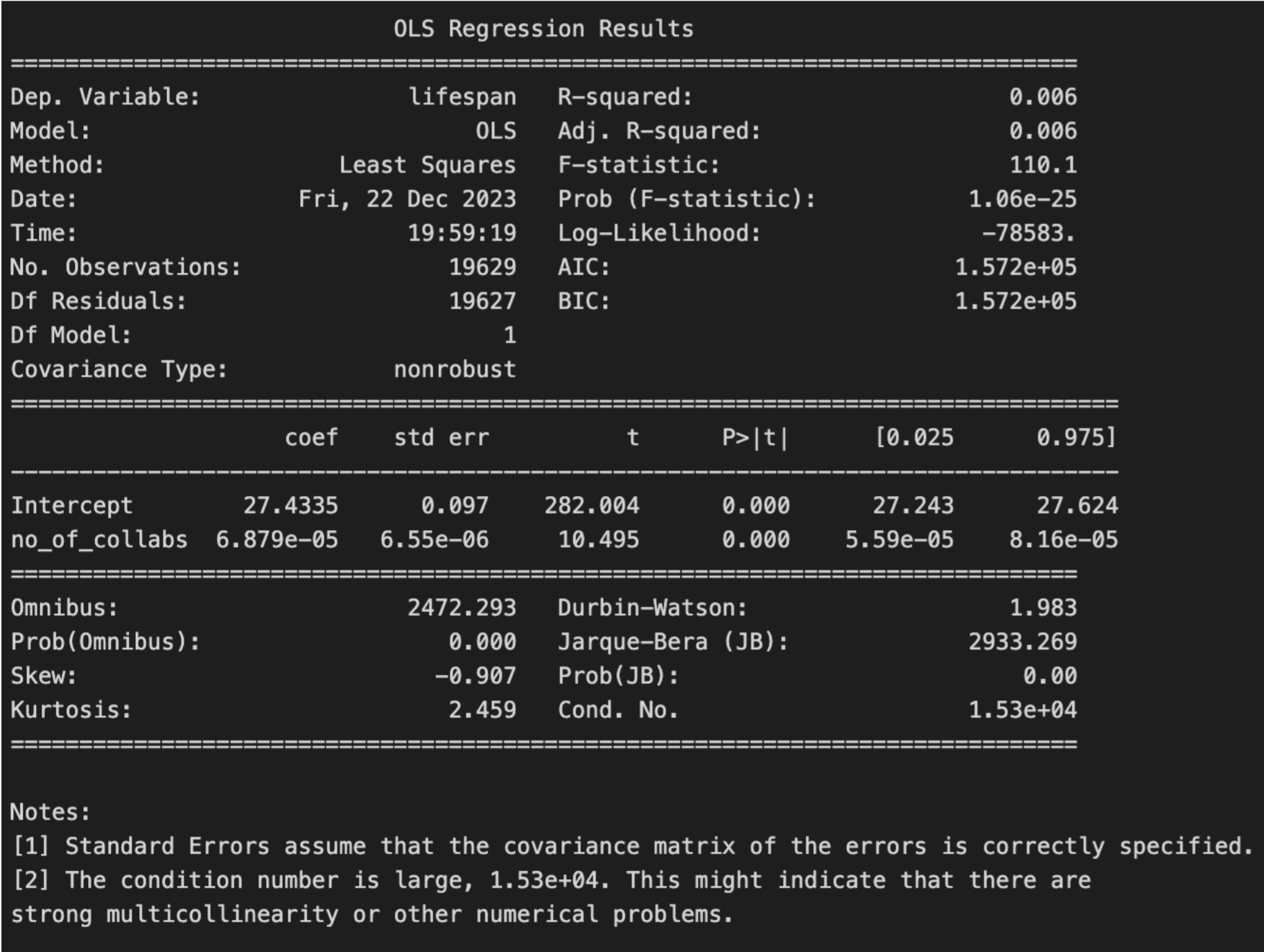
A potential confounding factor in the relationship between the number of collaborations of a channel and the number of videos a channel uploads. A channel which uploads more videos may have invested more resources into their youtube channels and are thus more likely to be willing to engage in a collaboration. When more videos are uploaded, it is likely that the channel is releasing new content for a longer period of time. New content may be able to sustain viewership with the aid of services like youtube notifications. Thus, we will model the relationship between lifespan and number of collaborations again with the number of videos a channel has uploaded as a confounding variable.
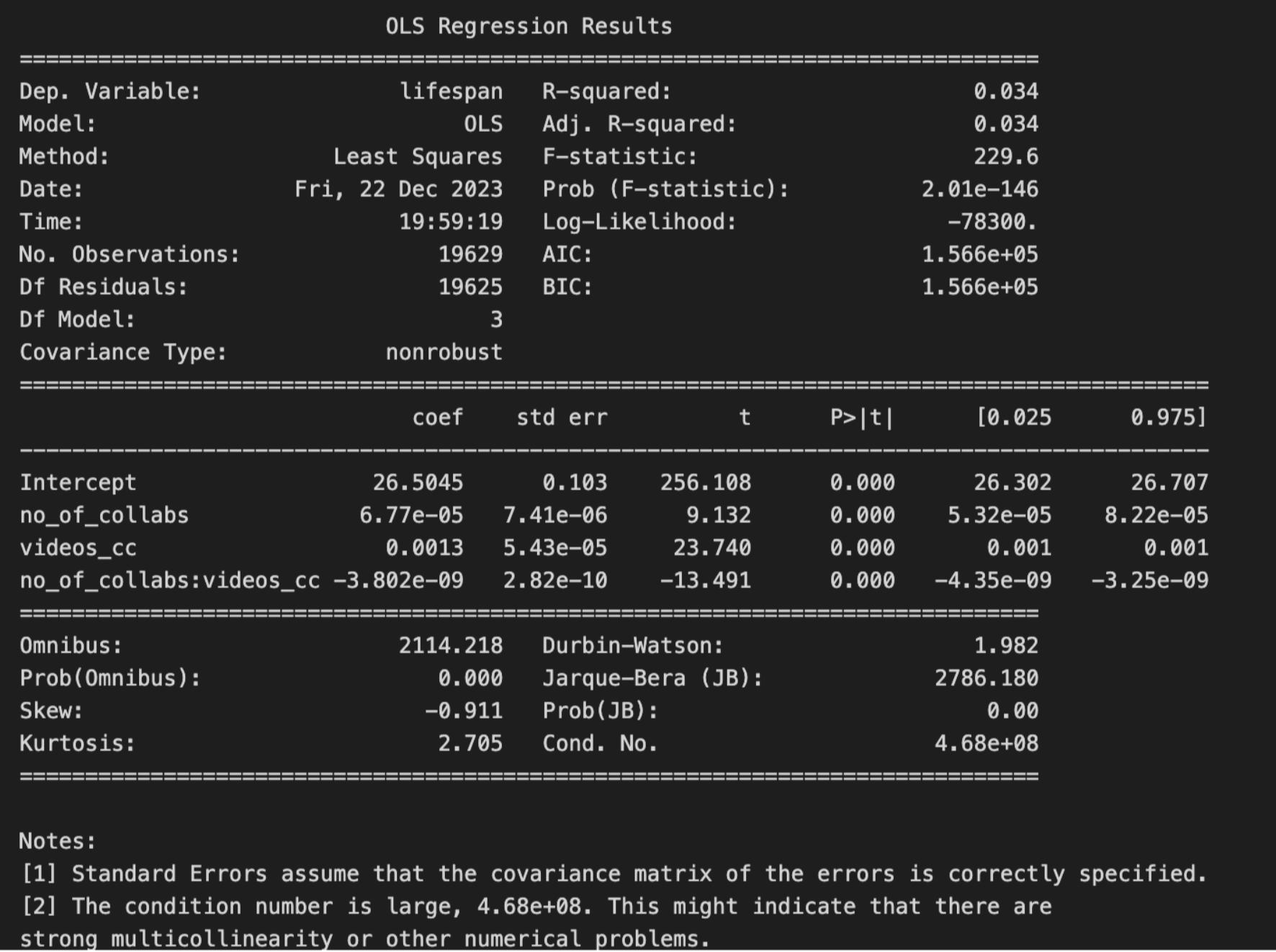
The new model is able to explain the variance in channel lifespan much better as seen from the much higher r-squared value of 0.034. Both the number of videos uploaded by a channel and the interaction term between number of videos uploaded and the number of collaborations the channel engages in are statistically significant, at the 5% significance level, in influencing the lifespan of the channel as the p-value of these variables are all < 0.05. The above regression model tells us that a unit increase in the number of collaborations that a channel engages in and a unit increase in the number of videos of a channel results in an increase of (6.77*10^-5 + 0.013 - 3.80*10^-9) months of the channel’s lifespan.
Thus, from the above analysis, we can see that although the impact of collaborations on a channel’s popularity is statistically significant, it is only one of the many factors influencing channel growth.
